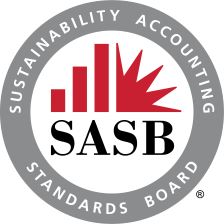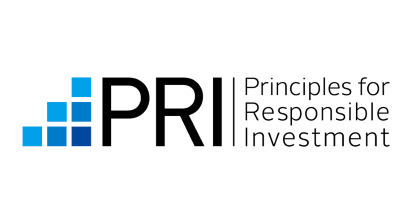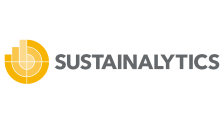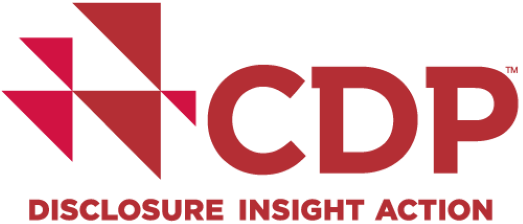FAQs
-
ESG vs. sustainability vs. CSR and other terms – how do you distinguish or define the differences between these?
A broad range of terms are used, often interchangeably, to refer to the constellation of topics that fall under the ESG umbrella. “Corporate sustainability” generally refers to the ability of a company to continue operating over the longer term, utilized to cover a broad range of environmental and social factors that the company both impacts and is impacted by. Sustainability data and disclosure can serve as a proxy of a company’s ability to meet present demands without compromising its ability to address business needs in the future.
“ESG” is a comparatively more modern term that is typically utilized in the capital markets and refers to the lens and framework through which capital markets have been trying to account for sustainability-related (sometimes referred to as “non-financial”) data and performance in investment decision-making. The end-goal for any ESG-related strategy is to support an organization’s long-term sustainability, whether that be its social license to operate or the viability of its business model in a changing climate and transition to a low-carbon economy.
HXE Partners uses the terms “sustainability” and “ESG” in tandem because together they encapsulate the wide range of business issues (and the framing of these issues) that are important and material to our clients and their stakeholders.
-
Why do investors care about ESG data and disclosure?
Investors are interested in understanding the risks and opportunities that may have a material impact on a company’s business strategy and its potential for value creation. These risks and opportunities increasingly include ESG factors that are relevant to a company’s business — factors such as extreme weather exposure, employee retention, and cybersecurity management.
ESG factors that are relevant to a company’s business should be appropriately monitored and managed. Disclosure of ESG data provides investors with the assurance that these material risks and opportunities are being reviewed by the company while also providing investors with the required information to integrate company-specific ESG considerations into their own investment approaches.
-
Which reporting frameworks and standards do you most recommend adopting and why?
At HXE Partners, we help clients prioritize their ESG goals and strategies through the investor lens. This is why we generally recommend leveraging the Sustainability Accounting Standards Board (SASB) Standards as well as the recommendations from the Taskforce on Climate-related Financial Disclosures (TCFD) in ESG disclosures. These are the most preferred frameworks by capital markets when evaluating the ESG performance of companies, and both are designed to be practical, flexible, and broadly applicable across different industries and geographies.
-
What are some upcoming ESG-related regulations my company or industry should be aware of?
In the United States, the SEC released a broad range of proposed rules regarding ESG-related disclosures in 2022 covering fund naming, cybersecurity, and climate-related disclosures, among other topics. Finalization of these rules continues to be delayed, but the SEC currently anticipates adoption in October 2023. While SEC rules typically include a phase-in period, given the complexity and scope of information required by these proposed rules, notably the proposed climate rule, companies must begin collecting and reviewing their emissions-related data now to ensure that they do not fall behind regulatory requirements once the rules are finalized.
In the European Union, the Corporate Sustainability Reporting Directive (CSRD), which went into effect in January 2023, will require sustainability reporting from a broad set of companies. Most notably, pursuant to CSRD, companies will be required to disclose ESG information from a “double materiality” perspective, meaning that a company must report on not only how sustainability risks and opportunities affect its financial performance (financial materiality), but also how the company’s operations affect people and the environment (impact materiality). The first companies subject to CSRD will have to apply the new rules for reports covering the 2024 fiscal year.
-
What are the differences between Scope 1, Scope 2, and Scope 3 emissions?
The GHG Protocol, the most commonly used methodology for calculating and reporting emissions for organizations in the US and worldwide, has defined three scopes of emissions. Scope 1 emissions, commonly referred to as direct emissions, arise from sources that are controlled or owned by an organization. For example, emissions associated with fuel combustion in boilers, furnaces, vehicles, or from releases of refrigerants to the atmosphere are all considered Scope 1 emissions. Scope 2 emissions are indirect emissions associated with the generation of purchased electricity, steam, heat, or cooling by the organization.
Scope 3 emissions, also known as value chain emissions, encompass indirect emissions that occur in the value chain of the organization, both upstream and downstream from its operations. The GHG Protocol has defined 15 categories of Scope 3 emissions, and not all 15 will be relevant to every organization. Examples of Scope 3 emissions include emissions from business travel, employee commuting, and transportation and distribution.
-
How is the information in an ESG report different from what we currently disclose in our other public documents?
Stakeholders do not always access company information from the same places. While analysts may gravitate toward earnings calls and financial reporting, an investor’s proxy voting team may rely most heavily on a company’s proxy statement. At the same time, communities, employees, and other key stakeholders may find regulatory disclosures too dense for their purposes. Furthermore, ESG topics do not always fall neatly within the confines of the disclosures required by the SEC or other regulators.
ESG reports provide companies with an opportunity to communicate their approach and perspective on relevant ESG matters in a consolidated location directly to individuals who are most interested.
Sustainability Reporting Standards and Frameworks






ESG Ratings and Data Providers




Sustainability Assessments and Rankings




Proxy Advisors


Follow the Latest ESG Developments
Sign up to receive HXE Partners’ monthly insights and analysis on the latest developments in sustainability management, ESG reporting, regulatory trends, and more.
Subscribe Here


